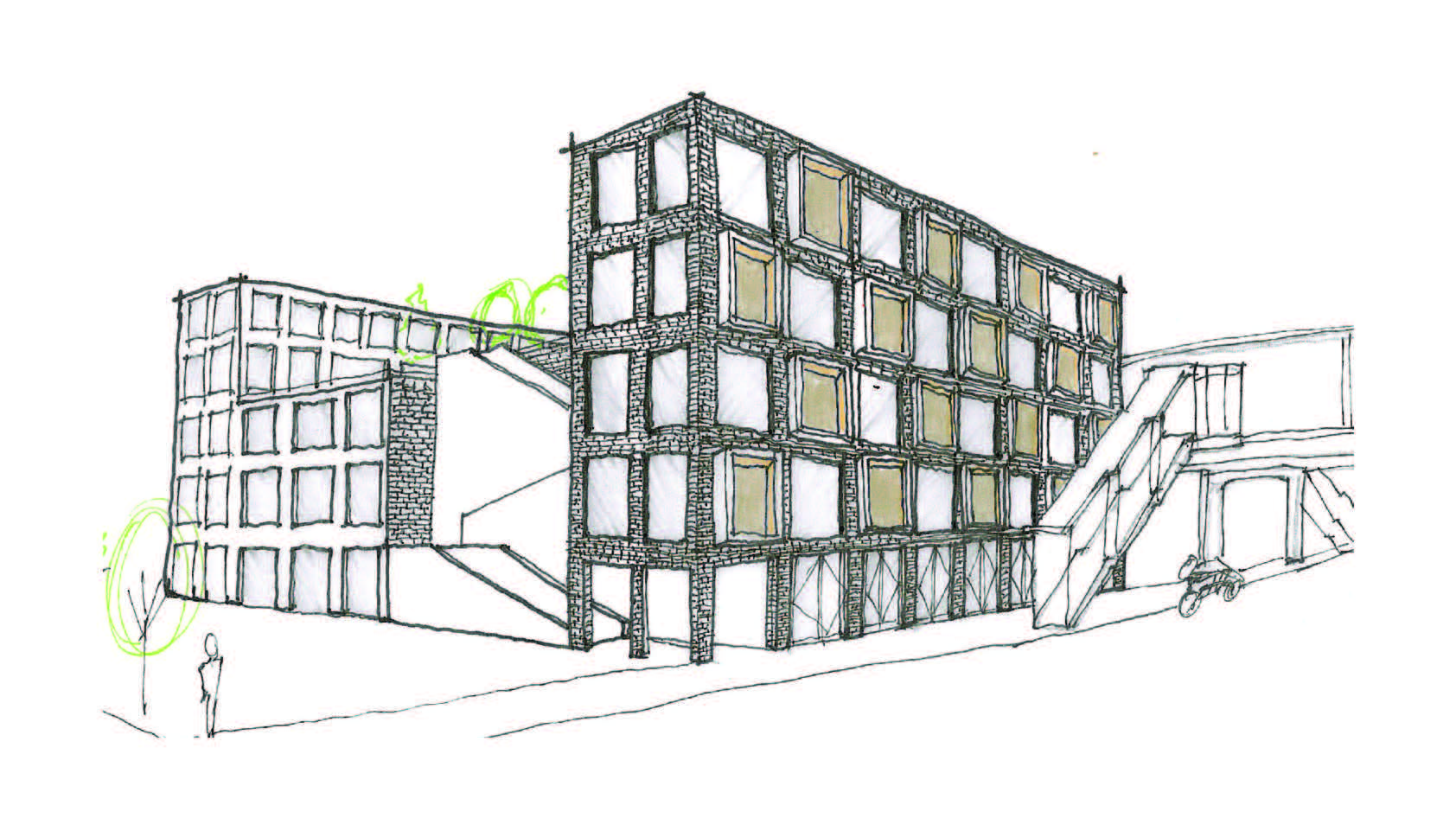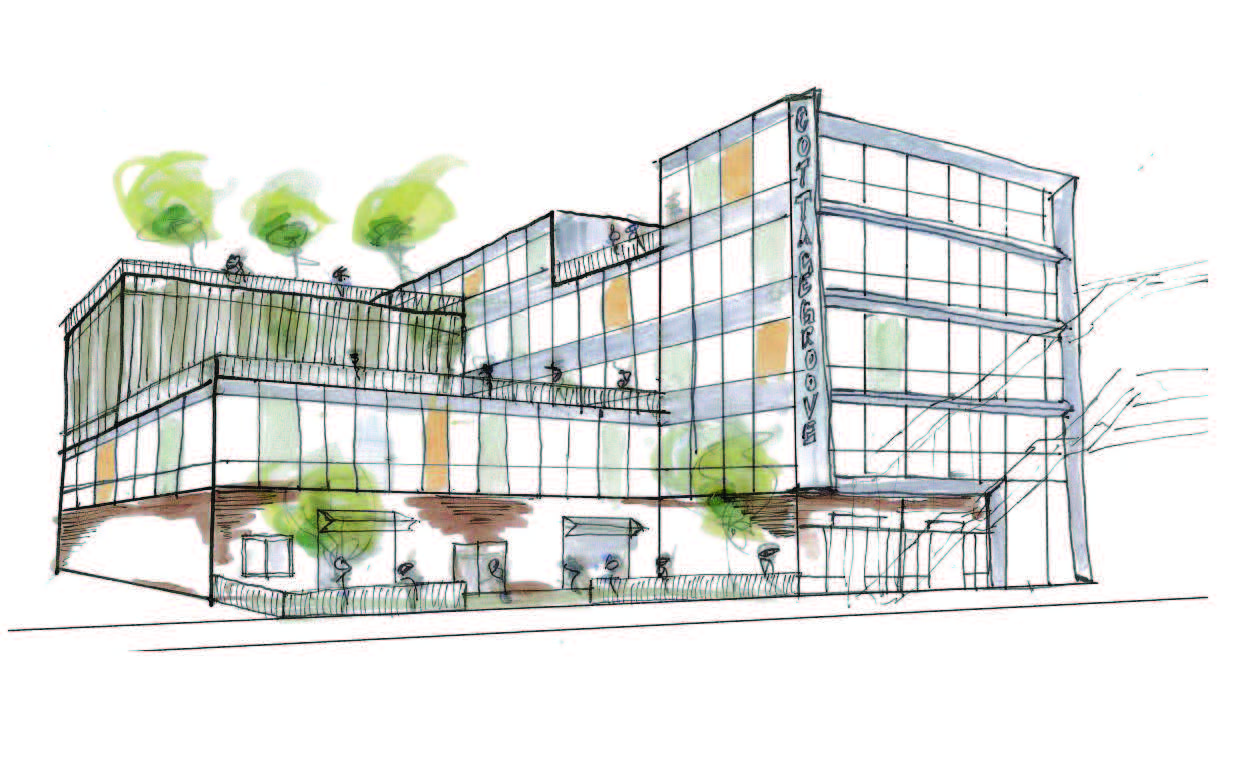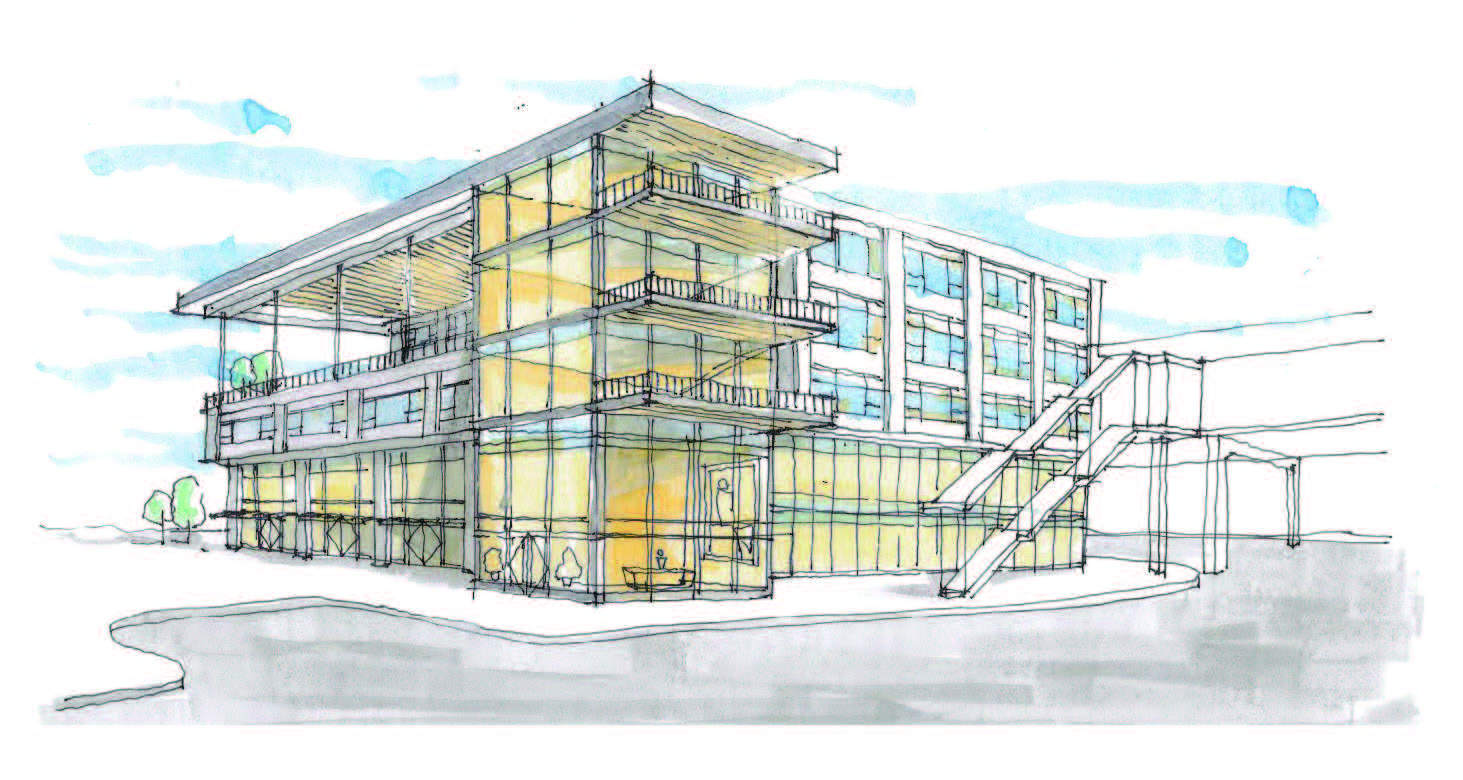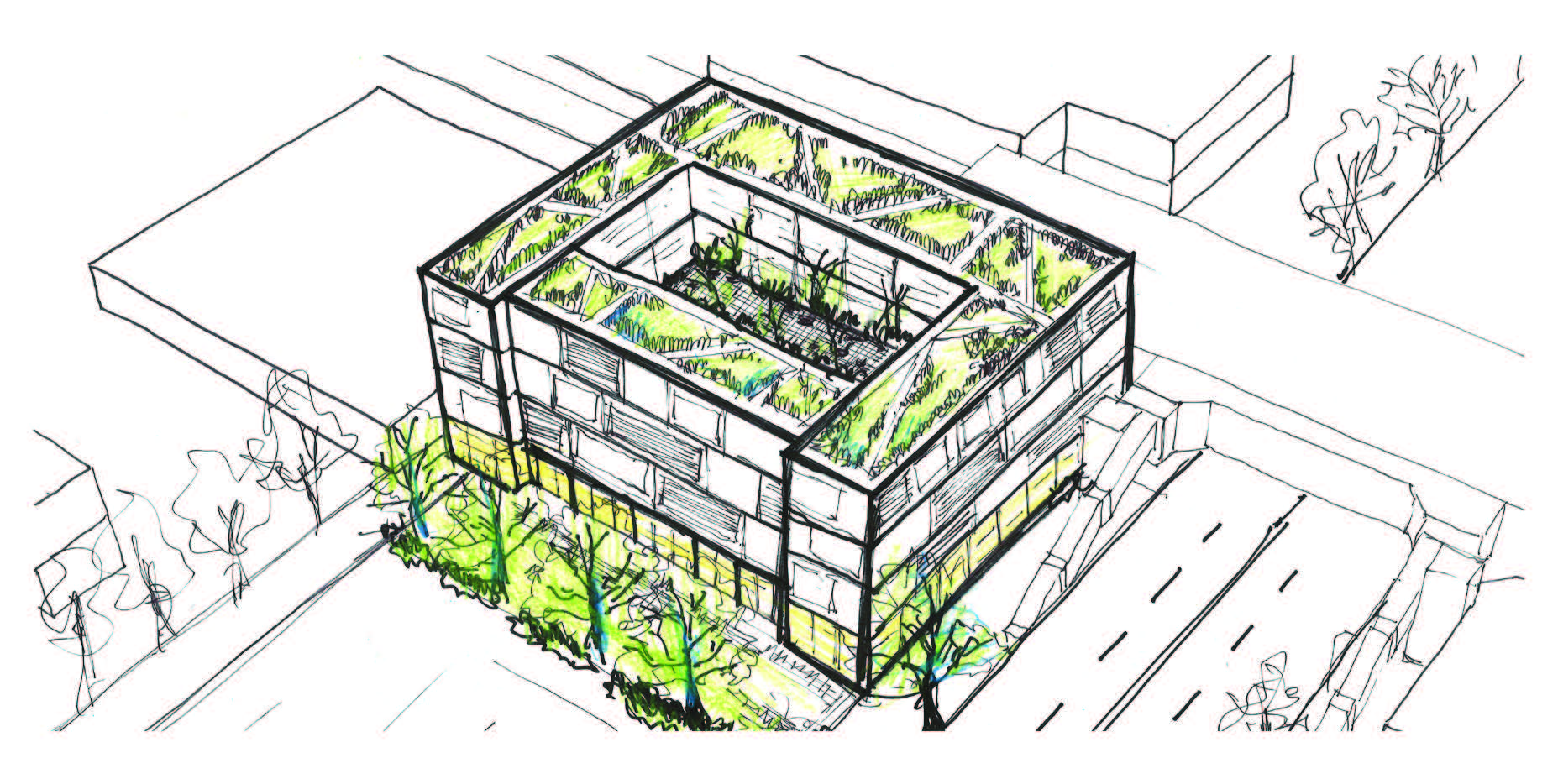Last Tuesday, the Cook County Land Bank Authority and Metropolitan Planning Council wrapped up the last of three public meetings with Woodlawn residents held as a precursor to the development of the long-vacant Washington Park National Bank Building at 63rd Street and Cottage Grove. The meetings were part of the Corridor Development Initiative (CDI), a community-oriented process designed to ensure that Woodlawn residents’ suggestions would be incorporated into the final plan for the development.
The CDI, a program of the Metropolitan Planning Council (MPC), is being presented as an opportunity to change Woodlawn’s historically fraught relationship with new development. Rob Rose, executive director of the Cook County Land Bank Authority (CCLBA), which acquired the building in December, mentioned at the first meeting on February 4 that the purpose of the three meetings was to end a long history of private developers picking up property in Woodlawn on the cheap and starting to build without any input from the community. Janita Marshall, a resident, remarked at that meeting that it was time for what was being built to reflect what would be useful for “people who actually live within the community.”

The bank building itself, which currently stands vacant, is part of a larger redevelopment process underway at the intersection, including a renovation of the Cottage Grove Green Line station and Woodlawn Station, a new mixed-income, mixed-use development by Massachusetts-based affordable housing nonprofit Preservation of Affordable Housing. In addition to providing the chance for a community-based development process, the bank building presents an attractive opportunity for developers; when the CCLBA acquired the building in an auction sale for buildings with delinquent taxes, they also acquired a special tax certificate that wiped out $500,000 of unpaid property taxes, according to Rose. A new developer would therefore be able to start from a clean slate.
The January 30 community meeting aimed to brainstorm potential uses for the building and gauge residents’ priorities. Throughout the evening, participants responded anonymously to multiple choice questions on small keypads at each table. According to several keypad polls, roughly sixty-four percent of poll participants agreed that it was difficult to find healthy food around 63rd and Cottage Grove, and forty-one percent thought that the intersection was very unsafe at night.
“We know in Woodlawn when disinvestment occurred, the first thing to go was entertainment,” said one resident during a group brainstorming session. “We used to be a mecca for cinema and jazz. We know that communities that lack that, what happens is that you don’t have money come into the community, and money also goes out because people wanna have fun, but elsewhere.” Another group voiced support for responsible retail that would benefit youth in Woodlawn, such as a coffee shop or bookstore.

At the second meeting, on February 6, residents participated in various exercises, like building block activities, to create proposals for the use of the building. The final meeting, on February 20, included an overview of some of these proposals and a panel discussion between developers who had been invited to give feedback on the community’s proposals, and point out any opportunities or dangers that might come up during the development process.
The four representative community proposals discussed at the meeting shared some broad traits. All four proposals included some mix of retail, commercial, and nonprofit space, along with a communal area, usually green space. Only one proposal included residential units, all of them priced at market rates.
Though the building itself is structurally sound, Rose did point out that almost the entire interior of the building would have to be renovated, and a slide on the screen behind him listed some of the problems with the building in its current state: four to five feet of standing water in the basement, eroding masonry and limestone, and a collapsing skylight in the lower roof, among other issues. Given that, strategies like using a historical tax credit for rehabilitation could be offset by the cost of repairs, according to panelist Jacques Sandberg, vice president at the development company Related Midwest.

The panelists also raised a couple of other points during the panel. Bridget Jones, a consultant who worked on Whole Foods’s Englewood store, noted that the suggestion in one of the proposals to build an underground parking lot was unnecessary. “The way to sell development to retailers is to emphasize how pedestrian-friendly it is,” she said. “I’m trying to think of how different traffic patterns make the street more vibrant at different times.”
Maurice Williams, a vice president at the Chicago Community Loan Fund, emphasized that the development process often takes a while. “It’s a thirty-six-month-period,” he said. “The first year is finding the right people, the second year is getting money, and the third year is actually building it.”
Residents also raised concerns about how the construction process would include Woodlawn residents and businesses. In response, Rose said that the CCLBA would require that any developer use “a certain percentage” of Woodlawn residents and businesses in the planning and construction process. He also mentioned that the CCLBA had hired CANDO Corporation, a consulting firm specializing in diversity and inclusion.
The CCLBA will give another presentation to the community at the Woodlawn Community Summit on March 3. After the agency has incorporated the community feedback into its Request for Proposals that will be released to potential developers, there will also be a further period for public comment.
Rose ended last week’s final meeting on a cautionary note. “There might be something built here that some of you will say you never voted for,” he said. “What we’re trying to do is establish grounding principles.”
Support community journalism by donating to South Side Weekly


Woodlawn residents were not the only ones in the meeting that voted. Special interests, i.e. the Public Health Department, Municipal Planning Council and the Land Bank staffs also voted. Voting should have only applied to actual residents of Woodlawn. We know what we need and want to be established on the 63rd Street and Cottage Grove Corridors. Our community has been deprived of viable businesses and commerce for decades. This used to be a bustling commercial zone in years past. the community is determined to see a bustling commercial zone in the near future. We have more than adequately expressed what we want to be built on that corner. Cultural, educational and commercial venues. Yet MPC continues to request input from the “community” At the Summit,, a great variety of non profits, businessmen, developers and other outside interests groups will be present. Again, they will be asked to vote for what they want to see on that corner. The vote taken on Saturday will not be a true representation of Woodlawn. So the comment that we might say in the end, we never requested the venue that is finally built there will only result from these watered down voting sessions, with other people voting beside Woodlawn residents. We, in the community, are not having it!
Debra – I was at that meeting and the METROPOLITAN Planning Council rep at our table did not vote. Also there were like 3 land bank staff people at the meeting, out of a group of probably more than 100. Also – having input from experts on urban development and real estate is probably a good thing as it brings market realities to the table as well.
Woodlawn is not an island – it is connected to Hyde Park, South Shore, and other communities, and those of us in neighboring communities deserve input as well. The South Side has seen disinvestment for years, let’s work together and not start trying to cut our neighbors from the process just because they live one or two blocks too far to the south, west, or north.
Keep up the fight Woodlawn residents ! We’re with you !